Nothing Left to Lose--A Novel Read online
Begin Reading
Table of Contents
About the Author
Copyright Page
Thank you for buying this
Tom Doherty Associates ebook.
To receive special offers, bonus content,
and info on new releases and other great reads,
sign up for our newsletters.
Or visit us online at
us.macmillan.com/newslettersignup
For email updates on the author, click here.
The author and publisher have provided this e-book to you without Digital Rights Management software (DRM) applied so that you can enjoy reading it on your personal devices. This e-book is for your personal use only. You may not print or post this e-book, or make this e-book publicly available in any way. You may not copy, reproduce, or upload this e-book, other than to read it on one of your personal devices.
Copyright infringement is against the law. If you believe the copy of this e-book you are reading infringes on the author’s copyright, please notify the publisher at: us.macmillanusa.com/piracy.
TO JOHN. SORRY FOR PUTTING YOU
THROUGH ALL THIS. YOU DID GREAT.
I sought my death and found it in my womb,
I lookt for life and saw it was a shade,
I trode the earth and knew it was my tomb,
And now I die, and now I am but made.
The glass is full, and now the glass is run,
And now I live, and now my life is done.
—CHIDIOCK TICHBORNE, “ELEGY”
ACKNOWLEDGMENTS
How can I possibly acknowledge the many quadjillions of people who contributed to this book? To this entire series? I’m frankly still kind of shocked that the first one got published, let alone six of them in a bunch of different formats and countries and languages. So let’s start at the beginning:
Thank you to my parents, who raised me as a reader. Thank you to my teachers: Mrs. Richardson, who helped me become a storyteller; Mrs. Coen, who taught me to love words; to Mrs. Hooper, who assigned us to read Dragonsong in sixth grade and showed me that fun books were every bit as good as important ones. And thank you to whoever wrote that news article I was too young to read about a guy who kidnapped little boys, took their pictures, and killed them with a hammer. Horror is everywhere, but realizing it was right in my own backyard changed the way I look at pretty much everything.
Thank you to Dave Wolverton, Linda Adams, and Marion “Doc” Smith. Thank you to my first writing group: Ben Olsen, Nate Goodrich, and Brandon Sanderson. Thank you to the staff of The Leading Edge, both during my time there and all the time before and since. Thank you to Michelle Ward and Jonathan Maberry, who helped me find my agent, and thank you to my wonderful agent, Sara Crowe, who is the best and greatest agent in the world. Thank you to Moshe Feder, who took a chance on some doofus with a horror story and gave me my first professional sale. You’re awesome. Thank you to Carsten Polzin, my editor in Germany, who paid me enough to actually do this full time, and who showed me how to appeal to a broader audience. Thank you to Alexis Saarela and Patty Garcia and Paul Stevens and Tom Doherty and Kathleen Doherty and Amy Stapp and Theresa Nielsen Hayden and Irene Gallo and a massive army of other amazing people at Tor who do such phenomenal work behind the scenes. And a huge thank you to my editor, Whitney Ross. You’re the best.
Thank you to Brandon Sanderson (again), Mary Robinette Kowal, Howard Tayler, Jordan Sanderson, and everyone who’s ever been on, talked about, or listened to Writing Excuses. Thank you to my writing groups and readers, including but not limited to Alan Layton, Kaylynn Zobell, Ethan Skarstedt, Sandra Tayler, Eric James Stone, Janci Patterson, Drew Olds, Emily Sanderson, Steve Diamond, Maija-Liisa Phipps, Ethan Sproat, and many more. Thank you to the concoms and booksellers and other authors who’ve promoted my work, and given me the opportunity and advice on how to do it; I’ll give an extra special shout-out here to Kevin J. Anderson and Jude Feldman and Alan Beatts. And thank you to my assistants, Chersti Nieveen and Kenna Blaylock.
Thank you to Elmore Leonard, A. A. Milne, and Ke$ha. I don’t have to explain myself to you.
Thank you to Billy O’Brien, Robbie Ryan, Nick Ryan, James Harris, Max Records, Christopher Lloyd, Laura Fraser, Toby Froud, Todd Jones, and a massive cast and crew too numerous to name. You made our movie amazing, and I will love it forever.
CHAPTER 1
There are only so many ways to get a good look at a dead body.
You can always just make your own, of course, which is what most people do. It’s quick, it’s cheap, and you can do it with things you have lying around your own home: a hammer, a kitchen knife, a relative who won’t shut up, and bam. Your very own corpse. As DIY projects go, murder is easier and more common than painting your living room, though—to be fair—significantly harder to hide. And it has other downsides as well: first, it’s murder. So there’s that. Second, and more pertinent to my own situation, it’s only really helpful if the dead body you want to see is one you have ready access to while it’s still alive. With the really good bodies, this is rarely the case. Let’s say you want to examine a specific corpse, like, oh, I don’t know, an old lady who died of mysterious causes in a small town in Arizona. Just to pull an example out of the air. Then it gets much harder.
If you need to look at a specific body, it helps to be an actual cop or, better yet, an agent of the FBI. You could mock up some quick excuse as to why this particular dead body was a key part of your investigation, go in, flash a badge, done. It might even be true, which would be a nice side benefit but isn’t really necessary. If you weren’t actually in law enforcement but you knew enough about it, you could waltz in with a fake badge and try to accomplish the same thing. But if you were also, for example, eighteen years old, convincing the local law enforcement to believe you would be easier said than done. The same goes for a teenager pretending to be a coroner, pretending to be a forensic examiner, and pretending to be a reporter. I’ve used the “I’m researching something for the school paper” line a couple of times, and it works well enough, but only when the something you’re researching isn’t a decaying human being.
That leaves three main options: first, if you can get there quick enough, you can try to trick the coroner into believing that you’re the new driver for the local mortuary, assigned to pick up the body and deliver it to the embalmer. You’d need some fake paperwork but, honestly, not as much as you might think. And since “driver” is an entry-level position, your age isn’t going to matter. And if you grew up in a mortuary and assisted in the family business since you were ten and knew the whole industry backward and forward—again, just to pull an example out of the air—you could do it pretty easily. But only if you got there in time.
Let’s say you didn’t, because you were two states away and travel solely by hitchhiking (or, honestly, whatever reason—you just can’t get there in time, is the important part). In that case, you move on to the second option, which requires more or less the same skills: break in to the mortuary after hours and show yourself around. I say “more or less the same skills” because you never know how good the mortuary’s security system is going to be, and you’re a teenage mortician, not a cat burglar. In a small town, or even a biggish city, if the funeral home is old enough, you might be able to make it work because they don’t always have the funds to update their equipment. It’s kind of an industry problem.
But let’s say they did update their equipment—no cameras, but an alarm with a motion sensor—and that you definitely don’t want to get caught breaking into a funeral home. I mean, I guess nobody would want to get caught breaking into anything, but let’s say for this example that you really, really don’t want it. Le
t’s even go so far as to say that the law enforcement agencies we mentioned earlier, which our totally hypothetical teenage mortuary expert was briefly tempted to impersonate, are, in fact, actively searching for him. So anything illegal is out of the question. That leaves us with only one option: we have to wait until the mortuary opens its doors, pulls the corpse out of the back room, and invites anyone who wants to see it to just come in and look at it. Which is never going to happen, right?
Wrong. It’s called a viewing, and it happens every day. They don’t let you really get in there and poke around, but it’s better than nothing. And Kathy Schrenk, a little old lady who died under mysterious circumstances in the Arizona town of Lewisville, had a viewing today. And a teenage mortician with an FBI background stood outside hoping his suit didn’t look too filthy.
Hi. My name is John Cleaver, and my life sounds kind of weird when I describe it like this.
I’ll describe it another way, but it’s not going to sound any more normal: I hunt monsters. I used to do it alone, and then for a while I did it with a team of government specialists, and then the monsters found us and killed almost everyone, and now I hunt them alone again. The monsters are called Withered, or sometimes Cursed, or sometimes Blessed if you catch one in a good mood, but that’s pretty rare these days. They’re old, and tired, and clinging to life more out of stubbornness than anything else. They used to be human, but they gave up some intrinsic part of themselves—their memory, or their emotions, or their identity; it’s different for each of them—and now they aren’t human anymore. One of them told me that they were more than human, and less, all at the same time. They’ve spent ten thousand years with incredible powers, ruling the world as kings and gods, but now they just grit their teeth and survive.
The mysterious nature of Kathy Schrenk’s death is classic tabloid news: she drowned far away from water, her body soaked while everything around her was dry as a bone. Weird, but not automatically supernatural; Miss Marple could probably knock this one out on her lunch break. Nine times out of ten—nine thousand times out of nine thousand and one—it’s just a plain old human—jealous, or angry, or greedy, or bored. We’re horrible people, when it comes right down to it. Hardly worth saving at all.
But what else am I going to do? Stop?
I stared at the mortuary a little longer: Ottessen Brothers Funeral Home. I picked a piece of lint off my sleeve. Smoothed my hair. Picked another piece of lint. It was now or never.
This is what I’d been doing for months now, ever since the team had died and I’d sent Brooke home and I’d gone out on my own, hunting the Withered with no backup and no guides and no intel. I looked for anomalies, and I followed them up. Most of them didn’t pan out, and I simply moved on.
I went inside.
My hypothetical situation from earlier, about growing up in a mortuary, wasn’t hypothetical. You probably guessed that. My parents were both morticians, and we lived in a little apartment upstairs from the chapel. I started helping with funerals when I was ten, and with the actual embalming a few years later. Stepping into Ottessen Brothers was like stepping into my past. The tastefully understated decorations, at least a decade behind the times; the little half-moon table with a signing book and a faux-fancy pen. The unsettled mix of sophistication and generic religion, and a drinking fountain by the wall. I touched the wallpaper—elegant but rugged, designed to withstand bustling crowds and untrained pallbearers—and thought about my home. I hadn’t seen it in almost three years, though I’d glimpsed it now and then on the news. My sister and my aunt ran the mortuary now, but who knew how long that was going to last. They couldn’t run it on their own. My father wouldn’t help, and my mother … well, she wasn’t around to help either, was she?
Her corpse had been so damaged that I couldn’t embalm her. It was the one thing we’d shared, and even that was taken away.
The crowd in the Schrenk viewing was sparse, mostly other old ladies not long from a viewing of their own. A handful of old men. Someone had placed a table by the door with an arrangement of photos and memorabilia, and while there were plenty of group shots, Schrenk was all alone in the portraits. Never married, never had kids. Some photos included what looked like her twin sister. One of the photos showed Schrenk standing in front of the mortuary itself, her arm around a thick-waisted woman somewhere in her fifties. An odd place for a photo—maybe another friend’s funeral? But no, neither of them wore go-to-a-funeral kind of clothes. Employees, then? The rest of the table was covered with various little yarn hats and scarves, so I assumed Schrenk was a knitter.
I moved past the table and into the viewing room itself: the coffin on the far wall, flanked by flags, with various chairs and sofas scattered around the edges of the room, most of them full of old women having hushed conversations. One corner held a refreshments table with an assortment of crumbly cookies.
“I think she looks terrible,” said an old lady by the food, “whispering” to a small cluster of concerned women. I couldn’t tell if she was pretending to whisper but wanted to be heard, or if she legitimately didn’t know how to regulate her own volume. “I’ve never seen a body look less lifelike in my life.”
I walked slowly past them toward the coffin, trying to look like I belonged.
“Hello,” said a man, stepping forward and offering his hand. I shook it. “Are you a friend of Kathy’s?” He looked about sixty, maybe sixty-five.
“Acquaintance,” I said quickly, spooling out my prepackaged lie. “She was friends with my grandmother, but she couldn’t make it today so she wanted me to pay our respects.”
“Wonderful!” he said. “What was your grandmother’s name?”
“Julia.” I didn’t know any Julias, but it was as good a name as any.
“I think I heard Kathy mention her,” said the man, though I couldn’t tell if I’d stumbled onto an accidentally accurate name or if he was just being polite. “And what was your name, young man?”
“Robert,” I said, hoping it was generic enough that he would forget it if anyone asked. I tried to never use the same name twice, thanks to the whole FBI thing. I looked at him a moment: a well-worn suit, too high on the ankles; a plain white shirt already fraying at the creases in the cuffs and collar. This was a man who wore these clothes a lot, and I made an educated guess: “Do you work for the mortuary?”
“I do,” he said, and offered his hand again. “Harold Ottessen, I’m the driver.”
“The driver?” There goes my bit about drivers being young. “I assume your brother is the mortician, then?”
“He was,” said Harold. “But I’m afraid he passed away about twenty years ago.”
“I’m sorry to hear that.”
“These things happen,” he said. “We’d know, in our family. Margo runs things now; she’s around here somewhere.”
I nodded, already bored of the small talk. “It was very nice to meet you, Harold. I’m going to pay my respects.”
He nodded and offered his hand to shake a third time, but before I could extricate myself, another old lady walked up with a stern look.
“It’s completely disgraceful,” she said. “Can’t you do anything about it?”
“I’ve told you,” said Harold, “this is just how they look sometimes.”
“But it’s your job,” said the woman. “Why are we even here if you can’t do your job?”
I was desperate to see the body by now, wondering what kind of horror everyone was complaining about, so I left Harold to fend for himself and walked to the coffin. There was another woman standing beside it, though she was much younger—barely older than me, maybe nineteen or twenty, and dark-skinned. Mexican, maybe? She screwed her face into an unhappy scowl but hid it when she saw me out of the corner of her eye.
The body was, after all the anxious hype, pretty normal. Kathy had been thin in her photos and looked thin now, with curly gray hair and a pale, gaunt face. I’d been expecting some visible injuries, something I could tie directly to a
Withered attack—maybe a giant bite taken out of her face. Or, failing that, some kind of problem with the embalming itself, like maybe they’d set the features poorly and now she had sunken eyelids or hollow cheeks or something. Something to justify the mortified attitude from all of her friends. What I saw was far simpler, and so surprising I said it out loud.
“They did her makeup wrong.”
“Excuse me?” asked the girl next to me.
“Sorry,” I said. “It just took me by surprise, is all.”
“You’re a dick,” she said.
“Excuse me?”
She smirked. “It just took me by surprise, is all. Isn’t that what we’re doing, narrating our lives out loud? Let me keep going: We’re standing by my dead friend. Some random douchebag is mocking her makeup, of all things.”
“I’m sorry,” I said, “I’ll shut up now.”
“Oh good, we’re still doing it. I’ll stop talking, too, and then I’ll stand here waiting for you to leave.”
This was going great. “Just … give me a minute.” I tried to ignore the young woman and looked at the body again. Part of a mortician’s job—arguably half of it, after the actual embalming—was to make the dead person’s body look as close as possible to what it looked like when they were alive. Poor Ms. Schrenk looked wrong, in ways a person off the street probably couldn’t put a finger on but which all worked together to make her seem off. Profoundly corpselike, instead of resting in peace. It was disconcerting, but a trained eye could see that they’d actually only missed a couple of key things.
First of all, the foundation looked good. Dead bodies don’t have blood in their skin, so they look much lighter than they did in life, but the mortuary’s makeup artist had used a dark foundation under a lighter one to add some color back into her face. The other major problem was the eyes, which tended to have dark circles around them, like black-eye bruises. But the makeup artist had hidden those as well. And that was hard to do right, which is why it was so confusing that whoever had done Kathy Schrenk’s makeup had missed a much simpler detail: shading. We’re so used to seeing people vertical, that when we see them lying flat, especially in the weird light of a viewing room, their facial features look all wrong. They don’t have the right shading, in subtle places like the nostrils and the lips. A trained mortuary makeup artist should have caught that, but nobody had.

 Partials
Partials The Devil's Only Friend
The Devil's Only Friend Isolation
Isolation I Don't Want to Kill You
I Don't Want to Kill You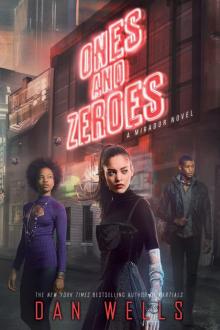 Ones and Zeroes
Ones and Zeroes Next of Kin
Next of Kin Over Your Dead Body
Over Your Dead Body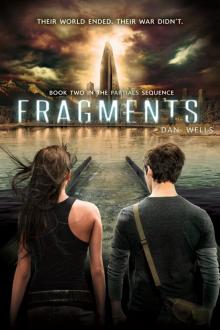 Fragments
Fragments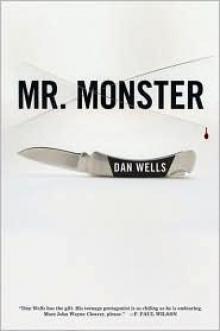 Mr. Monster
Mr. Monster The Butcher of Khardov
The Butcher of Khardov I AM NO T A S E RI AL KI L L E R
I AM NO T A S E RI AL KI L L E R Nothing Left to Lose--A Novel
Nothing Left to Lose--A Novel Active Memory
Active Memory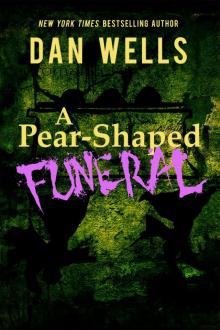 A Pear-Shaped Funeral
A Pear-Shaped Funeral I Am Not a Serial Killer
I Am Not a Serial Killer Bluescreen
Bluescreen Ruins
Ruins Zero G
Zero G The Hollow City
The Hollow City Extreme Makeover
Extreme Makeover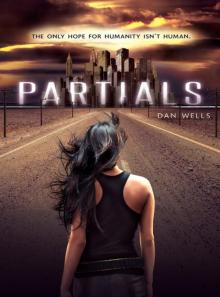 Partials p-1
Partials p-1 The Complete John Wayne Cleaver Series: I Am Not a Serial Killer, Mr. Monster, I Don't Want to Kill You, Devil's Only Friend, Over Your Dead Body, Nothing Left to Lose
The Complete John Wayne Cleaver Series: I Am Not a Serial Killer, Mr. Monster, I Don't Want to Kill You, Devil's Only Friend, Over Your Dead Body, Nothing Left to Lose